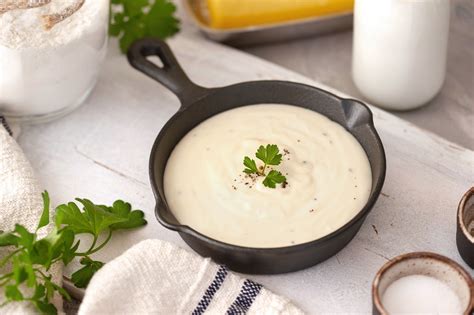Discover traditional Brazilian dishes, popular ingredients, regional variations, healthy recipes, and tips for cooking authentic Brazilian food at home. Perfect for a balanced diet.
Traditional Brazilian Dishes
Contents
When it comes to traditional Brazilian dishes, there are a few that stand out as quintessential to the country’s culinary heritage. One of the most iconic dishes is Feijoada, a hearty stew made with black beans and a variety of pork cuts, such as sausage, bacon, and ribs. This dish is often served with rice, collard greens, and orange slices, and is commonly enjoyed during special occasions and gatherings.
Another staple of Brazilian cuisine is Moqueca, a seafood stew that hails from the northeastern state of Bahia. Made with coconut milk, palm oil, and a mix of fish and shellfish, Moqueca is a flavorful and aromatic dish that captures the essence of tropical Brazilian cooking. Its rich and creamy texture makes it a popular choice for seafood lovers.
For those with a sweet tooth, Brigadeiros are a must-try. These bite-sized chocolate truffles are made from condensed milk, cocoa powder, and butter, and are rolled in chocolate sprinkles. Brigadeiros are a beloved treat in Brazil, often enjoyed at birthday parties and celebrations, and are a delicious example of the country’s confectionery tradition.
When exploring the world of traditional Brazilian dishes, one cannot overlook Coxinha. This savory snack consists of shredded chicken encased in a deep-fried dough, resulting in a crispy and indulgent treat. Coxinha is a popular street food across Brazil, and its popularity has even spread to other countries, making it a beloved dish for many.
| Dish | Region |
|---|---|
| Feijoada | Throughout Brazil |
| Moqueca | Bahia |
| Brigadeiros | Throughout Brazil |
| Coxinha | Throughout Brazil |
Popular Ingredients in Brazilian Cooking
Brazilian cuisine is known for its vibrant flavors and diverse ingredients. From the Amazon rainforest to the shores of the Atlantic, the country’s culinary landscape offers a wide array of popular ingredients that are essential in Brazilian cooking.
One popular ingredient in Brazilian cuisine is coconut milk, which is widely used to create creamy and rich dishes, such as the famous Moqueca de Peixe (Brazilian fish stew). It adds a unique tropical flavor to savory and sweet dishes alike.
Another staple in Brazilian cooking is black beans, which are a key ingredient in Feijoada, the national dish of Brazil. Black beans are also used to make a variety of side dishes and tasty bean stews.
Manioc (also known as cassava) is a versatile root vegetable that is used to make manioc flour, a common ingredient in many Brazilian recipes. Manioc flour is often used as a thickening agent in stews and also serves as a crunchy topping for various dishes.
Palm oil (dendê oil) is an important ingredient in traditional Brazilian dishes, adding a distinct red color and a unique flavor to dishes such as Acarajé, a popular street food in Bahia.
Regional Variations of Brazilian Cuisine
When it comes to Brazilian cuisine, each region of the country has its own unique flavors and cooking styles, influenced by the local ingredients and cultural traditions. From the rich and savory dishes of the Amazon rainforest to the fresh and tropical flavors of the coast, there is a wide variety of regional variations to explore in Brazilian cooking.
One of the most distinctive regional cuisines in Brazil is found in the northeastern state of Bahia, known for its Afro-Brazilian heritage. The cuisine of Bahia is characterized by the use of spices such as coriander, ginger, and pepper, as well as ingredients like coconut milk and palm oil. Traditional dishes like Moqueca, a fish stew cooked in a clay pot, and Acarajé, deep-fried balls of black-eyed pea dough filled with shrimp, reflect the unique flavors of this region.
In the southern state of Rio Grande do Sul, the influence of European immigrants is evident in the local cuisine, with an emphasis on grilled meats and hearty stews. Churrasco, a style of barbecue featuring a variety of meats cooked on skewers over an open flame, is a popular dish in this region. Another staple of southern Brazilian cuisine is the hearty stew known as Feijoada, made with black beans and a variety of pork cuts.
Moving to the Amazon rainforest, the cuisine of this region features an abundance of fresh seafood, exotic fruits, and wild game. Dishes like Tacacá, a spicy soup made with jambu leaves and shrimp, and Pato no Tucupi, a duck stew flavored with a tangy sauce made from wild manioc root, showcase the diverse and adventurous flavors of Amazonian cooking.
Exploring the regional variations of Brazilian cuisine allows for a deeper understanding of the country’s culinary traditions and the diverse influences that have shaped its food culture over the centuries.
Healthy Brazilian Recipes for a Balanced Diet
Brazilian cuisine is known for its rich and flavorful dishes, but it’s not always associated with being healthy. However, there are many traditional Brazilian recipes that are both delicious and nutritious, making it possible to enjoy the flavors of Brazil while maintaining a balanced diet.
One popular healthy Brazilian dish is acai bowls, which are made from the antioxidant-rich berry indigenous to the Amazon rainforest. These bowls are typically served with granola, fresh fruit, and a drizzle of honey, making them a satisfying and nutritious breakfast or snack option.
Another healthy Brazilian recipe is moqueca de peixe, a fragrant fish stew made with coconut milk, tomatoes, and peppers. This dish is high in protein and healthy fats, and is often served with a side of rice and steamed greens, providing a well-rounded and satisfying meal.
Salpicão is a Brazilian salad that is packed with fresh vegetables, lean protein, and a light and zesty dressing, making it a great option for a light and healthy lunch or dinner. This colorful and flavorful dish is a great way to incorporate a variety of seasonal vegetables into your diet.
Finally, feijoada light is a healthier version of the traditional Brazilian black bean stew. This recipe uses lean cuts of meat and plenty of vegetables, making it a satisfying and nutritious option for those looking to enjoy a taste of Brazil without overindulging.
Tips for Cooking Authentic Brazilian Food at Home
When it comes to cooking authentic Brazilian food at home, the key is to focus on using fresh and high-quality ingredients. Whether you are making feijoada, moqueca, or coxinha, it’s important to source the best ingredients you can find to ensure that your dishes turn out as delicious as possible. Look for specialty Brazilian grocery stores in your area, or consider ordering ingredients online if you can’t find them locally.
To achieve the authentic flavors of Brazilian cuisine, it’s also essential to familiarize yourself with the traditional cooking techniques used in Brazilian food preparation. Whether it’s grilling meats for a churrasco, or mastering the art of making the perfect caipirinha, taking the time to learn these techniques will help you achieve the most authentic and delicious results.
Another important aspect of cooking authentic Brazilian food at home is to embrace variety and diversity. Brazilian cuisine is incredibly diverse, with influences from indigenous, African, European, and Asian cultures. Experiment with different regional dishes, flavors, and ingredients to fully appreciate the richness of Brazilian food.
Lastly, don’t be afraid to get creative in the kitchen. While it’s important to stay true to the traditional flavors and techniques of Brazilian cooking, feel free to put your own spin on classic recipes. Whether it’s adding a twist to a traditional feijoada or creating a unique dessert inspired by Brazilian flavors, embracing creativity can lead to delicious and unique dishes.












